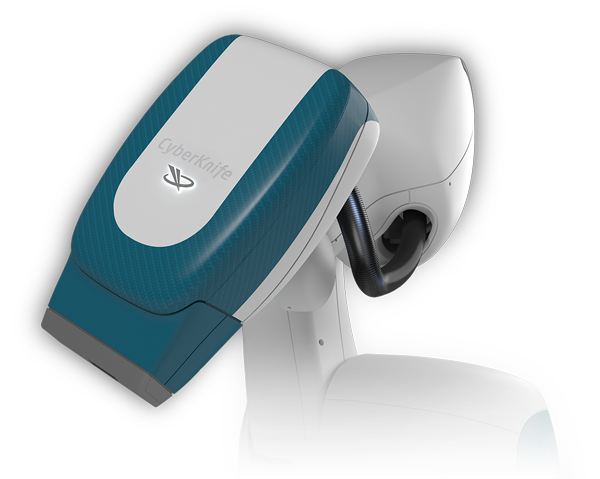An effective, less disruptive treatment option
The CyberKnife® System is an image-guided linear accelerator mounted to a robotic arm that was specifically designed to deliver SBRT. It is the precision of the system, delivered by its robotic arm, and continual tracking and automatic synchronization of the radiation beam to the tumor in real-time throughout treatment, that makes such a difference for patients. The treatment eliminates many of the inconveniences of other treatments — and significantly reduces the risk of the side effects that too often disrupt the lives of patients during and after treatment.

